HIDE
CACHÉ
Daniel Gray
2020
| 11 min
2D Animation
English, French sub-titles
Selections and Awards
Jury’s Special Mention – Canadian CompetitionSommets du cinéma d'animation, Montreal, Canada (2020)
Special Mention – Short Film Category of the International Official Competition Buenos Aires International Independent Film Festival (BAFICI), Buenos Aires, Argentina (2021)
Special Mention – Grand Competition Short FilmWorld Festival of Animated Film – Animafest Zagreb, Croatie (2021)
European Film Academy Short Film Candidate Krakow Film Festival, Poland (2021)
The International Federation of Film Societies (FICC) Don Quixote Award Krakow Film Festival, Poland (2021)
Special Mention – International CompetitionFriss Hús Budapest International Short Film Festival, Hungary (2021)
Top 10 Audience Favorite – International ProgramSao Paulo International Short Film Festival, Brazil (2021)
Special Jury Award for Short Films (Koji Yamamura) New Chitose Airport International Animation Festival, Hokkaido, Japan (2021)
Pont d'Or AwardFestival de Cinéma d'Animation de Pontarlier, France (2021)
Jury Special Mention Animateka International Animated Film Festival, Slovenia (2021)
Winner of the Main Competition Piccolo Festival dell’Animazione, Italy (2021)
Silver Award for Motion DesignLos Angeles Animation Festival, California (2021)
Official SelectionKaboom Animation Festival, Amsterdam (2022)
More Selections and Awards
Two brothers entertain themselves with a joyous game of hide and seek while their parents cook dinner. As one boy counts, the other quickly hides in a small cabinet full of glasses, stubbornly determined to win. Seconds pass… then minutes… years… and decades. Every so often, the boy peeks out of the sideboard. What he sees is strange and unfamiliar. With each glance, everything and everyone he once knew changes and fades, until he is left alone.
Written and directed by award-winning filmmaker Daniel Gray (t.o.m., 2006; teeth, 2015), HIDE is an emotionally stirring and surreal animated short with elements that could be described as horror. The film is about homesickness and disconnect in a world where technology has seduced us with the promise of bridging continents and bringing us closer. Yet without being physically present, without being able to share a meal, a drink or a seat on a sofa, we are no more than ghosts—peeping toms casually observing our fading memories and distant, aging loved ones.
Using a sparse soundtrack and visual design that shifts from bright and spacious simplicity to opaque fragments, HIDE tells a heartrending, prescient story about family, social anxiety and isolation in a world that is increasingly disjointed and unrecognizable.
Co-produced by La Cellule Productions (France), CUB Animation (Hungary), and the National Film Board of Canada, HIDE allegorically explores the idea of moving far from home yet remaining able to see and communicate with your loved ones.
Two brothers entertain themselves with a joyous game of hide and seek while their parents cook dinner. As one boy counts, the other quickly hides in a small cabinet full of glasses, stubbornly determined to win. Seconds pass… then minutes… years… and decades. Every so often the boy peeks out of the sideboard. What he sees is strange and unfamiliar. With each glance, everything and everyone he once knew changes and fades, until he is left alone.
Written and directed by award-winning filmmaker Daniel Gray (t.o.m., 2006; teeth, 2015), HIDE is an emotionally stirring and surreal animated short with elements that could be described as horror. Using a sparse soundtrack and visual design that shifts from bright and spacious simplicity to opaque fragments, HIDE tells a prescient story about family, social anxiety and isolation in a world that is increasingly disjointed and unrecognizable.
ONE AND TWO-LINERS
Two-liner
Two brothers entertain themselves with a game of hide and seek. As one counts, the other hides in a small cabinet. Seconds pass… then minutes… years… and decades. HIDE is a heartrending and prescient story about family and disconnect, in a world that is increasingly fragmented and unrecognizable.
One-liner
Two brothers are playing hide and seek. One of them finds the perfect hiding spot… and never comes out. Life carries on outside.
STYLE AND SOUND APPROACH
Daniel Gray’s latest animated short, HIDE, is a refreshingly quiet film. In an era where animation frequently screams and shouts, HIDE mostly whispers. “It was a choice to have it quiet most of the time,” says Gray. “In the visual approach to the film, there’s a strong awareness of contrasts. Between inside and outside of the cupboard. Between different times of the day, years, states of mind. So that quietness was very useful when I wanted to introduce moments of stress and chaos; to emphasize them.”
The film’s palette also changes, shifting from bright open spaces to a more dark, fragmented and claustrophobic design. “The thing I needed to show is that this isn’t about a broken family. It’s a normal house with happy kids playing a game for the sake of being playful. So the beginning had to feel like a different film than what unfolds. Once the mechanics of the disconnection get going, the cupboard becomes an impossible space, in which I wanted to exaggerate the volumes in a way that would help show what the character was physically going through. The outside of the cupboard had to look unfamiliar but the same each time he opened the door, so different lighting and colours had to be used effectively, and the emotional state of the story outside also needed to be shown.”
INTERVIEW WITH DIRECTOR DANIEL GRAY
You’ve mentioned HIDE being a modern twist on homesickness. Can you elaborate on that idea?
With HIDE I was trying to capture the emotional colouring of that feeling I get in my stomach when I think of home. Home is a strange place for me now; my parents are getting older, my sisters and brothers are getting older—not in the same way as when I used to live near them, but in big noticeable chunks that are present every time I visit. I wanted to get that feeling of disconnection. Homesickness used to be a very obvious emotion. You didn’t see or speak to someone, you missed them. Now it’s very different; you see and speak to ‘home’ all the time, so that feeling of missing home is refined to a very particular emotional connection that is missing.
When I first saw the film, I kept looking for signs of abuse or some family dysfunction, but it’s not really there. This is actually a happy home. Was it important that this be a seemingly functional family?
Yes, it had to be that the ‘hider’ isn’t doing this as a way of hiding from a person or situation. In my experience, removing myself from one place to another was a fun adventure. I didn’t want the hiding to be a literal act of hiding from a trauma because that makes the film about the act of hiding rather than the effect of it.
Did you have the idea of using ‘hide and seek’ from the start, or were there other games or approaches you considered?
‘Hide and seek’ was the first mechanic I used. There is a short story called “A bújócska” (“The Hideout”) that I read, by a Hungarian poet named István Kemény. It’s about a big game of hide and seek. The atmosphere of the story really matched what I was trying to do with my story. I already had the flat and the idea of being removed, maybe having a parallel flat or flats, but his story made me think about hiding inside the place you are removed from. I loved the idea of the character hiding in the room, so you can’t see his form. Yet, you know he’s there in that cupboard the whole time.
One could also read themes of social anxiety and isolation—very timely themes in this Internet/pandemic age. Were these on your mind while making HIDE?
Those things are very prevalent in your life if you live in a country [Hungary] that is very alien to your default setting. It’s easy to get trapped in a feeling of isolation when your knowledge of a language is minimal and you have no foothold to socialize in that world. I tapped into the fear of that for sure. It works in the film’s favour that the feelings I was talking about are now massively universal, when previously they were more niche, though still relatable.
Your last two films were made with Tom Brown. How did the experience of co-directing compare to now working alone? Was it easier? Did you miss the collaboration?
I miss the camaraderie of working with Tom; he’s still one of my best friends and we chat a lot. Our friendship is better, though, now that we don’t talk about work and deadlines and stuff. That became the crux of our interactions, and I’m happy that it’s gone.
I think there are future projects on which I’d love to collaborate, and there are others where I think it’s safer if I don’t. In HIDE, I’m talking about things that are very close and real to me in life, so I liked working on it as a single, focused mind.
Poster
TRAILER
EXCERPT
OSCAR TOUR 2023 INTERVIEW
Images
Loading...
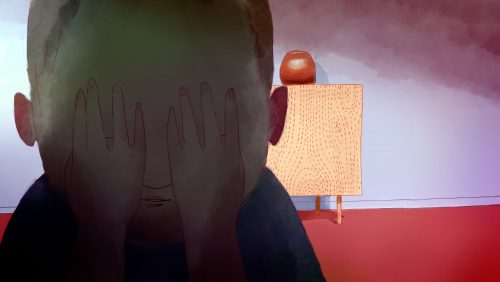
Download
Loading...
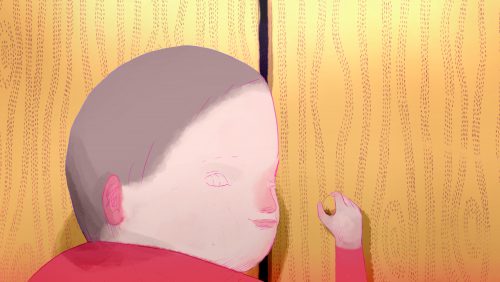
Download
Loading...
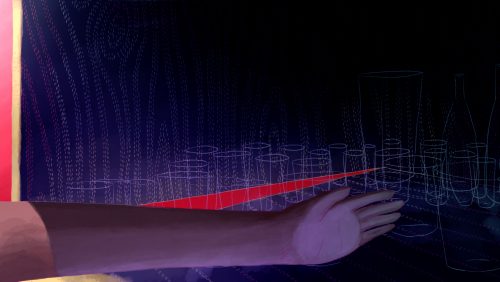
Download
Loading...
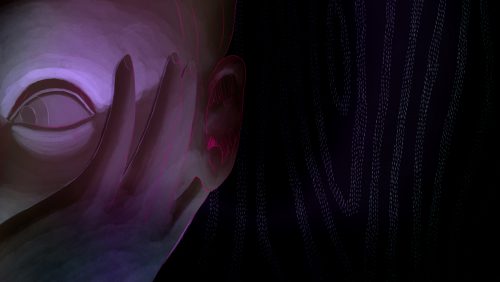
Download
Loading...
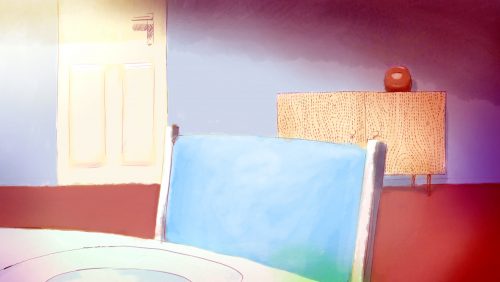
Download
Loading...
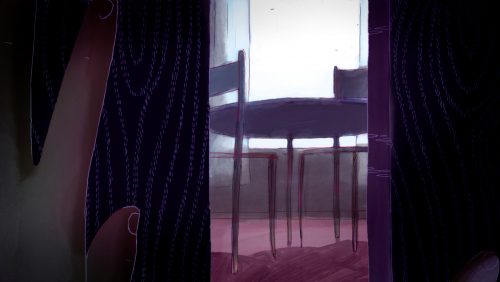
Download
Loading...
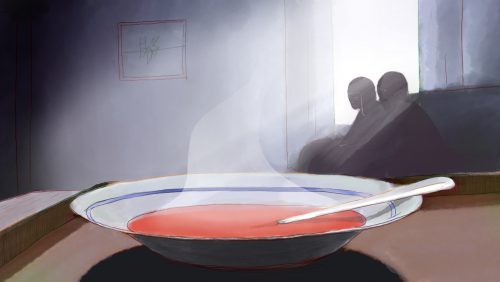
Download
Loading...
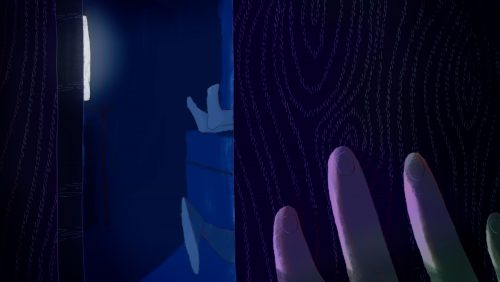
Download
Loading...
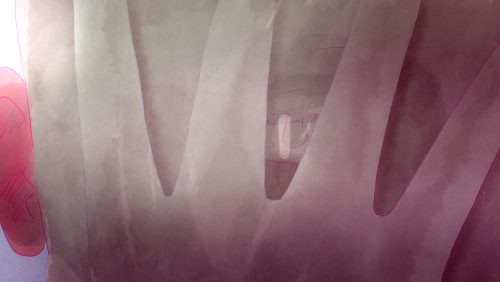
Download
Team
Daniel Gray
Director
Photo
Marion Barré
Producer (La Cellule Productions)
Photo
Photo : Clara Souchet
Soyo Giaoui
Producer (La Cellule Productions)
Photo
Photo : Shani Giaoui
Bella Szederkényi
Producer (CUB Animation Studio)
Photo
Photo : Somnium Studio Budapest
Bálint Farkas Gelley
Producer (CUB Animation Studio)
Photo
Photo : Somnium Studio Budapest
Maral Mohammadian
Producer (NFB)
Photo
Photo : © Maral Mohammadian
Michael Fukushima
Executive Producer (NFB)
Photo
Photo : David Fine
Credits
A film by
Daniel Gray
Sound Design
Olivier Calvert
Animation
Daniel Gray
Margot Barbé
Benoit Michelet
Islena Neira
Théo Sigot
Colour Studio
Borderline Films
Colourists
Juliette Cousin
Mathieu Monluc
Intern Colourist
Antoine Jové
Production Manager
Shanti Bourse
Production Assistant
Eric Manevy
Administration
Audrey Schnell
Accountant
Edwige Gordiet
Cast
Kid Brothers
Ryan Hill
Mihály Áron Zima
Grown Brothers
Amir Sám Nakhjavani
Marcell Miklós
Dad
Chris Cottrell
László Kövesdi
TV
Chimwemwe Miller
Voice Director
Kathleen Fee
Bálint Farkas Gelley
Voice Recording
Luc Léger
Péter Benjámin Lukács
Voice Casting
Judit Lakrovits
Foley
Nicolas Gagnon
Foley Recording
Geoffrey Mitchell
Re-recording
Isabelle Lussier
Technical Team
Eloi Champagne
Luc Binette
Randall Finnerty
Titles
Dave Thomas
Mélanie Bouchard
Online Editing
Serge Verreault
Administration
Rosalina Di Sario
Production Coordination
Dominique Forget
Faisal Moula
Production Assistant
Mariann Bogár
Marketing
Geneviève Bérard
Legal Counsel
Soyo Giaoui
Christian Pitchen
Dr. Gergely Kalocsay
Insurance
Rubini & Associés
Accounting
Lebrun Audiovisuel
Thanks
Olivier Catherin, Pascal Simonpietri, Louis Jacobée, Tiffany Fontaine, Alice Delalande, Alexandra Cola, Géraldine Baché, Charline Thenot, Elsa Tournier, Anne Le Normand, Hervé Regignano, Eric Réginaud, Simon Legueré, Mathieu Carré, Lionel Dos Santos, Sophie Hahne, Marion Martinot, Elodie Jacob-Juin, Audrey Granet, Dany Chabot, Agnès Paratte, Alain Rousset, Louise Lebecq, Céline Hautier, Stéphanie Arnold-Simonpietri, Olivier Baussaron, Emmanuel-Alain Reynal, Philippine Gelberger, Judith Abitbol, Igor Auzepy, Benoit Martin, Antoine Plouzen-Morvan, Clara Achache, Stéphane Demoustier, Michel and Claude Demoustier, Arnaud Reguillet
A Special Thanks To
Bella
Panni
Wendy
Mum
Dad
Producers
Marion Barré, Soyo Giaoui (La Cellule Productions)
Bella Szederkényi, Bálint Farkas Gelley (Cub Animation)
György Czutor (Official Films)
Maral Mohammadian (NFB)
Executive Producer
Michael Fukushima (NFB)
With the support of Le Centre national du cinema et de l’image animée – Fonds d’aide à l’innovation
With the support of Ciclic – Centre-Val de Loire Region in partnership with the CNC
With the support of Nouvelle-Aquitaine Region in partnership with the CNC
As part of Pôle Image Magelis with the support of the department of Charente in partnership with the CNC
Official selection MIFA pitches 2019 Annecy International Animated Film Festival
This project benefited from the NEF animation writing residency in Abbaye Royale de Fontevraud, odyssée program – ACCR, with the support of the French Ministry of Culture, the French National Center for Cinema and the Moving Image (CNC) and the French Region Pays de la Loire.
With support from the Patronage Program of The Hungarian Media Board
Produced by
La Cellule Productions
CUB Animation
The National Film Board of Canada
© 2020 La Cellule Productions, CUB Animation, The National Film Board of Canada
Media Relations
-
About La Cellule Productions
La Cellule Productions is a Paris-based production company that develops fiction and animation projects. Soyo Giaoui and Marion Barré, the company’s associate producers, maintain an eclectic and daring editorial line. Both are self-taught producers who like the idea of working and “growing up” together by supporting diverse artists who share similar creative ambitions. They’ve recently embarked on international co-productions and are also experimenting with other formats such as web series.
-
About Cub Animation Studio
CUB Animation Studio was founded by Bálint Farkas Gelley and Bella Szederkényi in 2015, guided by a shared obsession with telling stories using the unique tools of animation and the power of young talent. CUB Animation Studio’s favourite things are creating kids’ content with distinctive Central European flair and producing outstanding animated shorts. CUB often takes part in various projects at international pitch events like CEE, Cartoon Springboard and Annecy MIFA. CUB also collaborates on diploma films from MOME university in Budapest; their latest pride and joy is Flóra Anna Buda’s Entropia, which won the Teddy Award at the Berlinale in 2019.
-
About the NFB
The National Film Board of Canada (NFB) is a leader in exploring animation as an artform, a storytelling medium and innovative content for emerging platforms. It produces trailblazing animated works both in its Montreal studios and across the country, and it works with many of the world’s leading creators on international co-productions. NFB productions have won more than 7,000 awards, including seven Oscars for NFB animation and seven grand prizes at the Annecy festival. To access this unique content, visit NFB.ca.